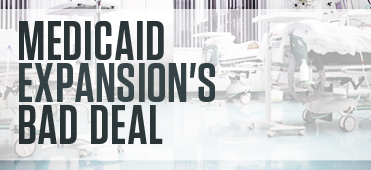Media

ObamaCare: Sub-Standard is the New Standard
“Junk policies,” “sub-standard plans,” “policies not worth keeping” and “bad apple insurance companies” are just a few of the terms used by the President and advocates of the ACA to criticize insurance companies for plans that don’t include the ACA’s 10 essential benefits. That’s ironic when you consider Obamacare has thus far sentenced 9 out of 10 enrollees on state exchanges to one of the most sub-standard plans of them all: Medicaid.
It sounds harsh, but it’s Medicaid—not individual health care plans—that has a reputation for limited access to doctors and, in some cases, outcomes worse than the uninsured. If ever there was bad apple insurance company, Medicaid is it. The program boasts a wide variety of benefits including prescription coverage and transportation assistance, but provider payments are so low that enrollees often struggle to find a doctor that will accept their coverage.
In the last month, Medicaid enrollments in Maryland, Washington, Kentucky and Oregon have more than quadrupled the number of private insurance enrollments on the exchange. Oregon hasn’t enrolled a single customer for private coverage since their website is still down, but managed to add 62,000 dependent on the state’s Medicaid program because the state is pre-qualifying welfare beneficiaries for Medicaid.
The jump in Medicaid enrollment isn’t just a bad deal for the newly insured. Higher Medicaid enrollment means that individuals purchasing plans on the exchange will have to pay more expensive premiums as Medicaid expansion shrinks the pool of as exchange shoppers. And state governments will be facing higher costs: In 2020, states will be responsible for at least 10 percent of Medicaid costs.
In the Washington Post, president of the Commonwealth Fund David Blumenthal, argued:
“The ultimate goal is to make insurance more affordable for Americans. I don’t think the program’s success should be judged by the ratio of private insurance to Medicaid.”
But that’s just it, government-run health care like Medicaid is MORE expensive than private insurance and the program’s low doctor reimbursement rates drives up everyone’s premiums through cost-shifting.
Sub-standard Medicaid should be the first target of any health care reform effort. To promise affordable health care, but provide no way for patients to utilize their coverage fails to help anyone in need of health care.